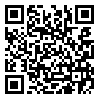Volume 21, Issue 151 (2024)
FSCT 2024, 21(151): 13-31 |
Back to browse issues page
Download citation:
BibTeX | RIS | EndNote | Medlars | ProCite | Reference Manager | RefWorks
Send citation to:



BibTeX | RIS | EndNote | Medlars | ProCite | Reference Manager | RefWorks
Send citation to:
Kashaninejad M, Ziaiifar A M, Soleimanipour A, Behnampour N. Prediction of textural characteristics in low-fat mozzarella cheese by Hyperspectral imaging using machine learning methods. FSCT 2024; 21 (151) :13-31
URL: http://fsct.modares.ac.ir/article-7-71880-en.html
URL: http://fsct.modares.ac.ir/article-7-71880-en.html
1- Professor, Department of Food Process Engineering, Gorgan University of Agricultural Sciences and Natural Resources, Gorgan, Iran,*Corresponding author, E-mail address: kashani@gau.ac.ir, Beheshti Ave., Gorgan. 49138-15739, Iran Tel-fax: +98(17) 32423080
2- Department of Food Process Engineering, Gorgan University of Agricultural Sciences and Natural Resources, Gorgan, Iran
3- Department of Biosystems Engineering, Gorgan University of Agricultural Sciences and Natural Resources, Gorgan, Iran
4- Health Management and Social Development Research Centre, Department of Biostatistics and Epidemiology, Golestan University of Medical Sciences, Gorgan, Iran ,Behnampour@yahoo.com
2- Department of Food Process Engineering, Gorgan University of Agricultural Sciences and Natural Resources, Gorgan, Iran
3- Department of Biosystems Engineering, Gorgan University of Agricultural Sciences and Natural Resources, Gorgan, Iran
4- Health Management and Social Development Research Centre, Department of Biostatistics and Epidemiology, Golestan University of Medical Sciences, Gorgan, Iran ,
Abstract: (1601 Views)
Changing the thermos-mechanical properties, variety of formulation and storage conditions, 36 samples of low-fat mozzarella cheese were produced and their hardness, adhesiveness, cohesiveness, springiness, cohesiveness, gumminess and chewiness were evaluated by TPA followed by analyzing data using completely randomized factorial design with univariate analysis through IBM SPSS Statistics. 26. Then, Imaging of the same samples with a Hyperspectral camera in the range of 400-1000 nm as well as pre-processing the spectra and preferring the important wavelengths by feature selection algorithms to developed the calibration models including multiple linear regression algorithms, partial least squares regression, support vector machine with a linear kernel, multilayer perceptron neural network, random forests and majority voting algorithm was performed in Python software followed by the performance of models were evaluated. Results showed that the more increased the stretching time in hot water from 2 to 8 minutes, the more the hardness, springiness, gumminess and chewiness and cohesiveness increased, but adhesiveness was decreased. The majority vote algorithm (VOTING) revealed the highest performance in hardness prediction (R2p=0.878, RMSEp=2606.52 and RPD=2.12) and was able to predict the cohesiveness of mozzarella with higher accuracy more than other algorithms. Multiple linear regression couldn’t predict the adhesiveness properly, but random forest method with high performance predicted this feature (R2p=0.808, RMSE=56.49, RPD=1.90). The multi-layer perceptron neural network with the least error, predicted springiness (R2p = 0.848, RMSEp = 0.094, RPD = 2.12) and chewiness (R2p = 0.84, RMSEp = 1117.21, RPD = 1.96) with high accuracy. All methods except random forest were able to predict the gumminess of mozzarella with high efficiency. In this study, it was cleared that the process conditions had significant effects on the textural characteristics and the Hyperspectral imaging was found to be a suitable alternative method for estimating the textural characteristics of mozzarella cheese.
Keywords: Key words: low-fat mozzarella, textural characteristics, Hyperspectral imaging, machine learning
Article Type: Original Research |
Subject:
food industry engineering
Received: 2023/10/7 | Accepted: 2023/11/22 | Published: 2024/08/22
Received: 2023/10/7 | Accepted: 2023/11/22 | Published: 2024/08/22
Send email to the article author
| Rights and permissions | |
 |
This work is licensed under a Creative Commons Attribution-NonCommercial 4.0 International License. |







